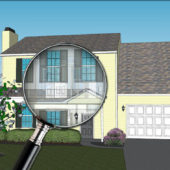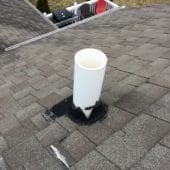Ice dams are a part of life in Rockford, Illinois. Unfortunately, they can cause a lot of damage to building materials. What is an ice dam? How do we stop an ice dam from forming? Ice dam prevention methods can limit or prevent ice dams from forming. In addition, materials can be installed to limit damage if you were to experience an ice dam at your home.
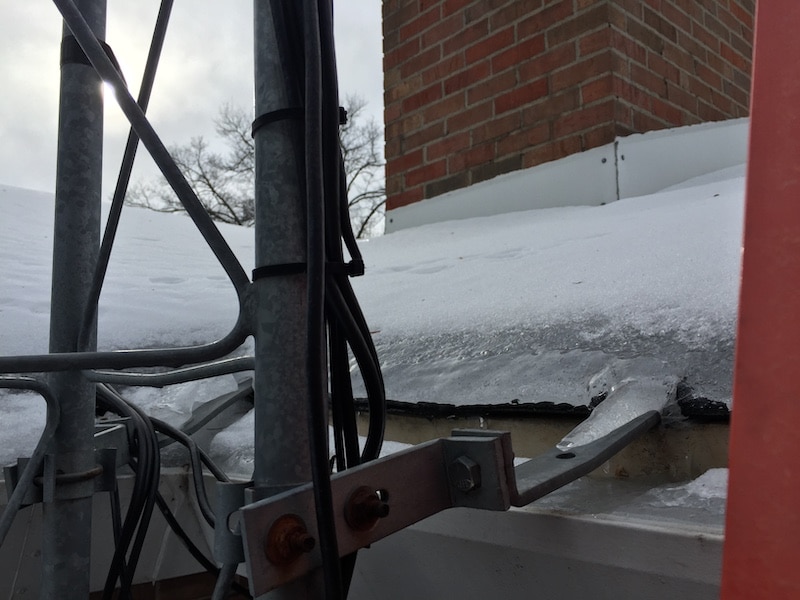
What is an Ice Dam?
An ice dam is a buildup of ice that typically occurs at the lower edge of a roof. Of course, ice dams only occur after snow has accumulated on a roof. As an example, let’s say a recent snowstorm dropped 8 inches of snow on the roof. Your furnace continues to operate to keep your house warm so you know that your home is loosing heat. Where does the heat go? A significant portion goes into the attic space. When it does, it warms the roof surface and begins to melt the snow. As the snow melt runs down the roof it freezes at the gutter edge. Day after day this continues until you have a large lump of ice at the bottom of the roof near the gutter. Now rain or additional snowmelt cannot drain off of the roof due to the ice dam. This is a problem because your roof shingles are not designed to hold water like a swimming pool.
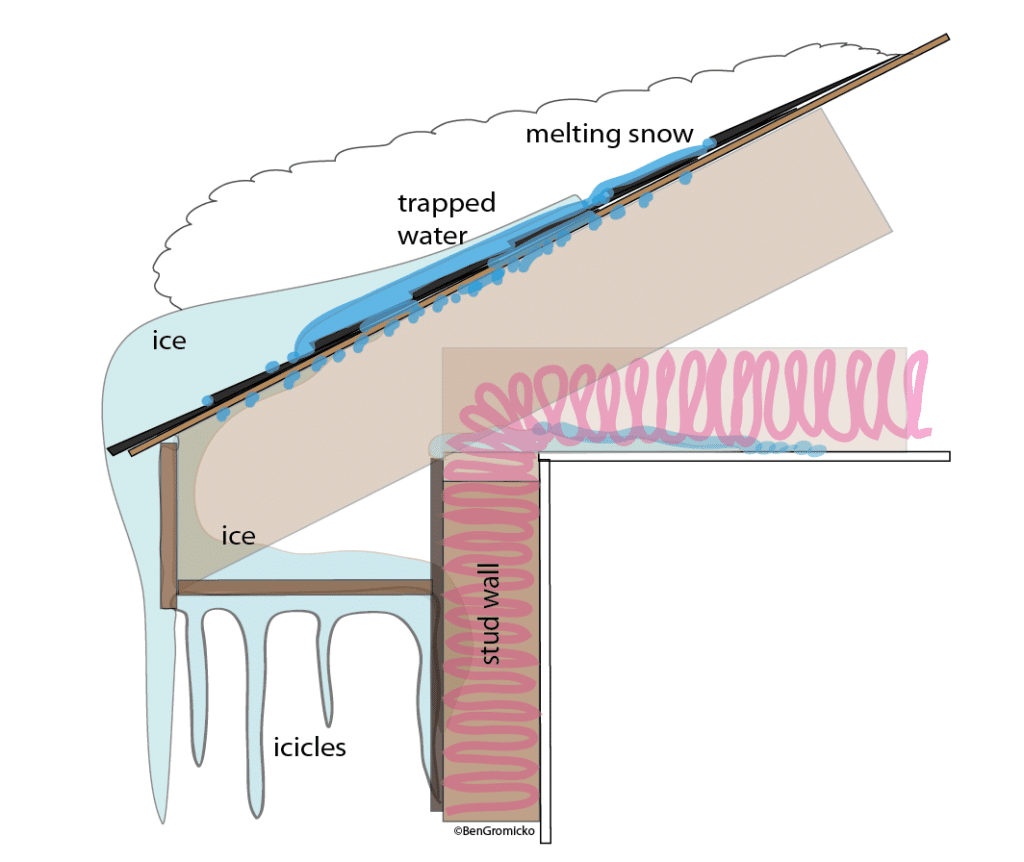
How to Stop an Ice Dam from Forming?
If we know that heat loss is the cause of ice dams then we need to limit or eliminate heat loss. We do this by slowing conductive heat transfer into the attic by increasing the amount of our attic insulation. We also limit convective heat loss by sealing attic bypasses with spray foam or caulking. If heat gets into the attic by conductive or convective means, then we can try to get rid of it by providing soffit and roof ventilation. If the temperature inside the attic is the same as the temperate outside the attic then the snow should not melt. However, a powerful thing called the sun comes into play too. It can melt portions of the roof causing snowmelt to run down to create an ice dam. This is why heat cables are used. Installing heat cables in the areas where ice will form can prevent ice dams. This however doesn’t always work perfectly and they must be installed properly for best results. In addition, using high quality cables is essential for high quality results. Also, heating cables increase your energy usage resulting in higher electric bills. Click here for high quality heat cables from Nvent.
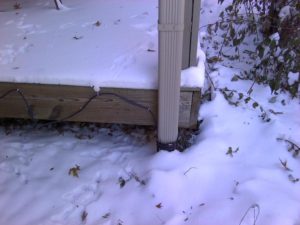
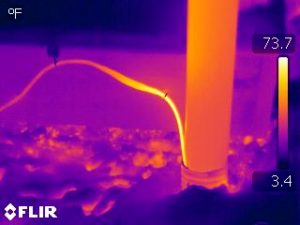
Roofing Methods for Ice Dam Prevention
Current standards recommend or require a barrier in areas prone to ice damming. Primarily, this area is considered the bottom 3 to 6 feet of the roof. This barrier replaces roofing felt as an underlayment and is superior to felt in that it is self-healing. When a nail penetrates the barrier, the barrier “heals” itself and doesn’t allow passage of liquid water. If an ice dam were to form in this area, liquid water should not be able to penetrate through this barrier protecting the structure from water intrusion. This does not always stop liquid water from entering but has greatly reduced damages from ice dams.
Help, I’ve Tried Everything!
If the above strategies have not worked for you then you can remove snow accumulation from your roof. Of course, this is dangerous so this is usually reserved for those that have the safety training and equipment do this properly. Generally, the bottom 3 to 6 feet of snow is removed near the gutter edges. This is usually accomplished using a tool called a roof rake. If ice has already formed then a contractor can remove the ice allowing liquid water to drain off of the roof. If you hate ice dams, have tried all preventative methods, and never want another ice dam then you can always move to Florida! But then you have to deal with alligators and hurricanes.
As a certified and licensed home inspector, Adam Lask has the training and qualifications to help you with your next home purchase. Googling “home inspector near me” will pull up various home inspectors in your area. Lask Inspection Group, LLC is a high quality home inspection company that serves Northern Illinois. We serve Rockford, IL and other Illinois cities such as Loves Park, Machesney Park, Chicago, Naperville, Aurora, Geneva, Dekalb, Sycamore, Elgin, Lake Zurich, Arlington Heights, Crystal Lake, and other Chicago suburbs. We also are trained in commercial inspections through CCPIA and the ASTM E2018 standard.

